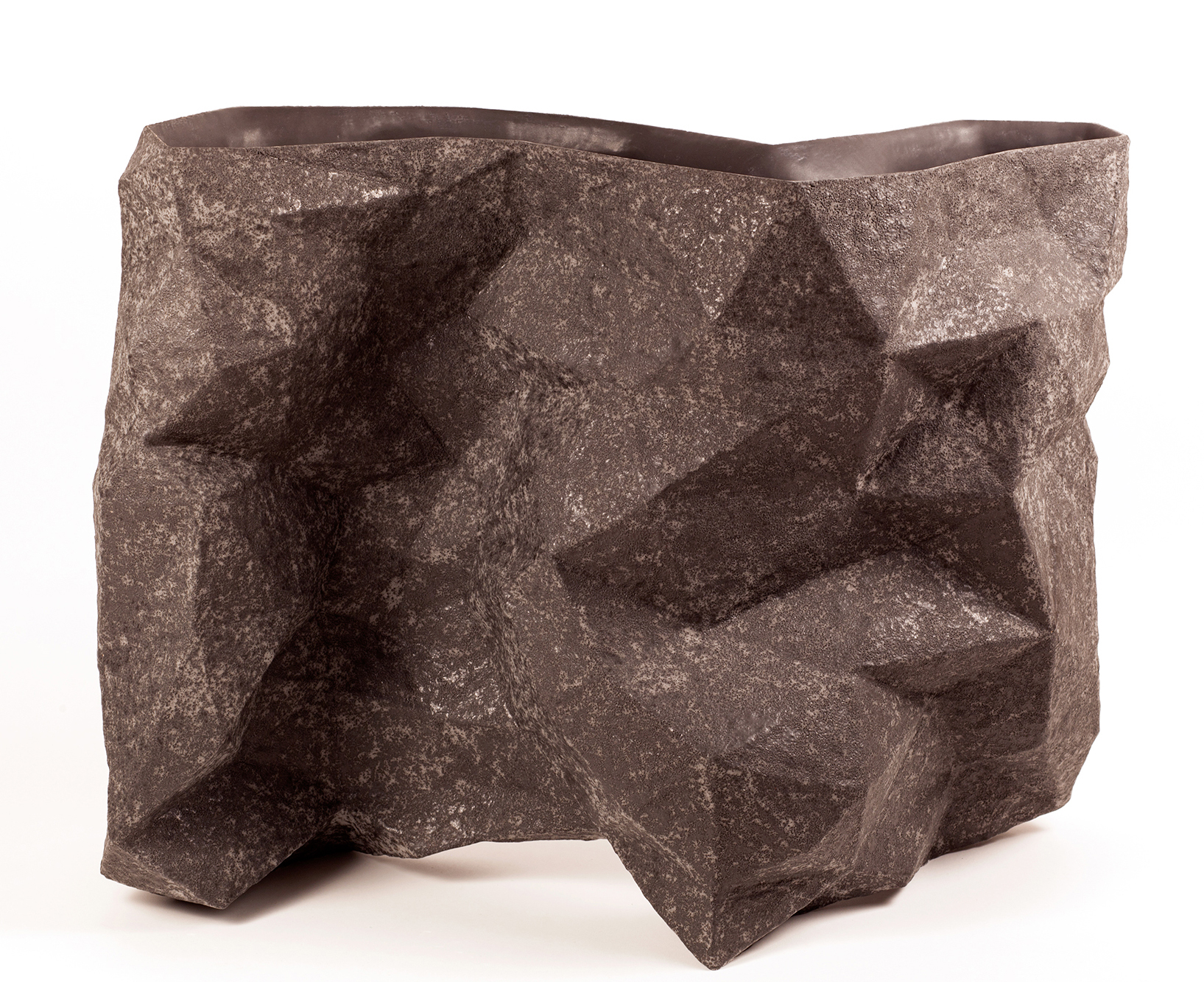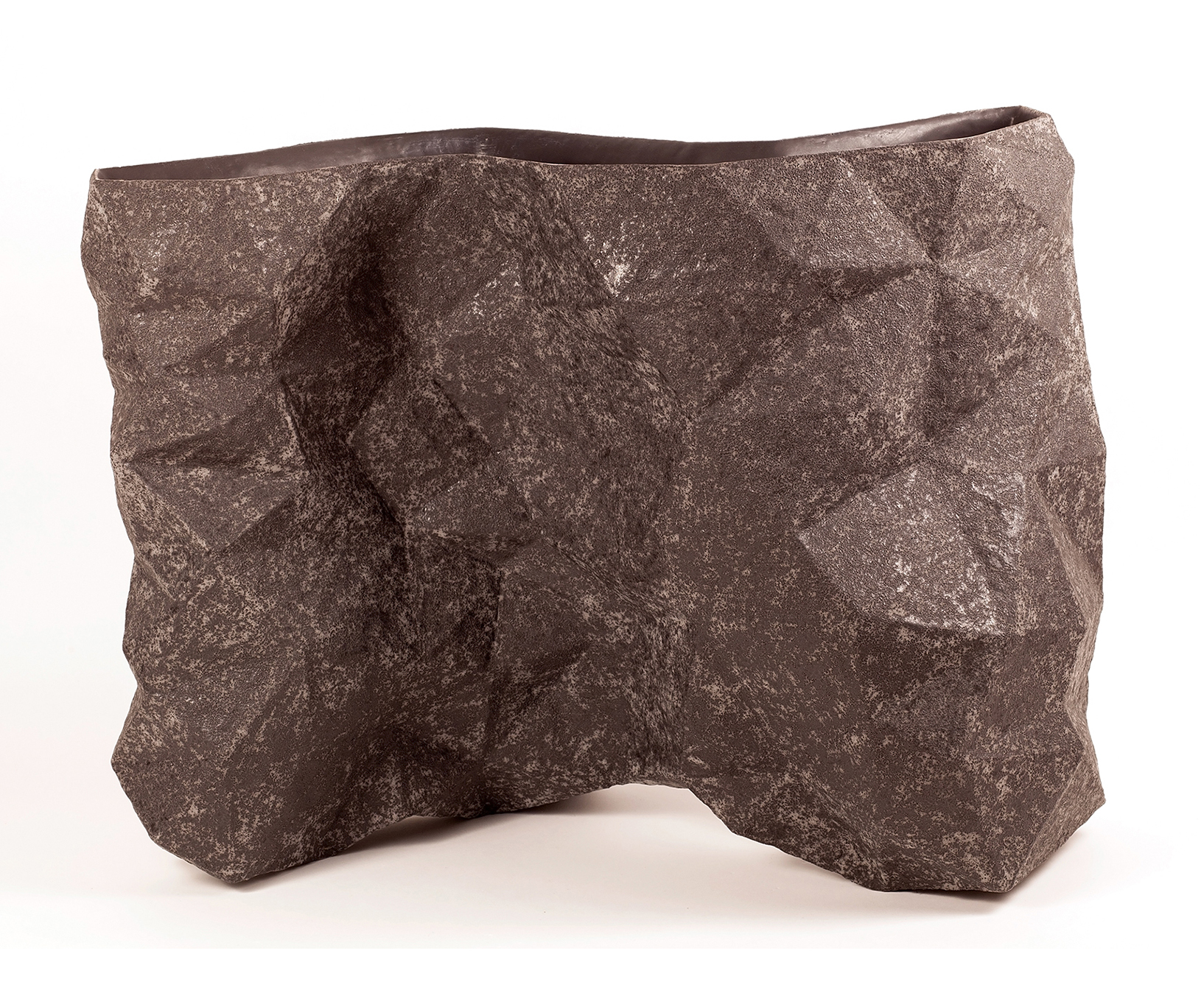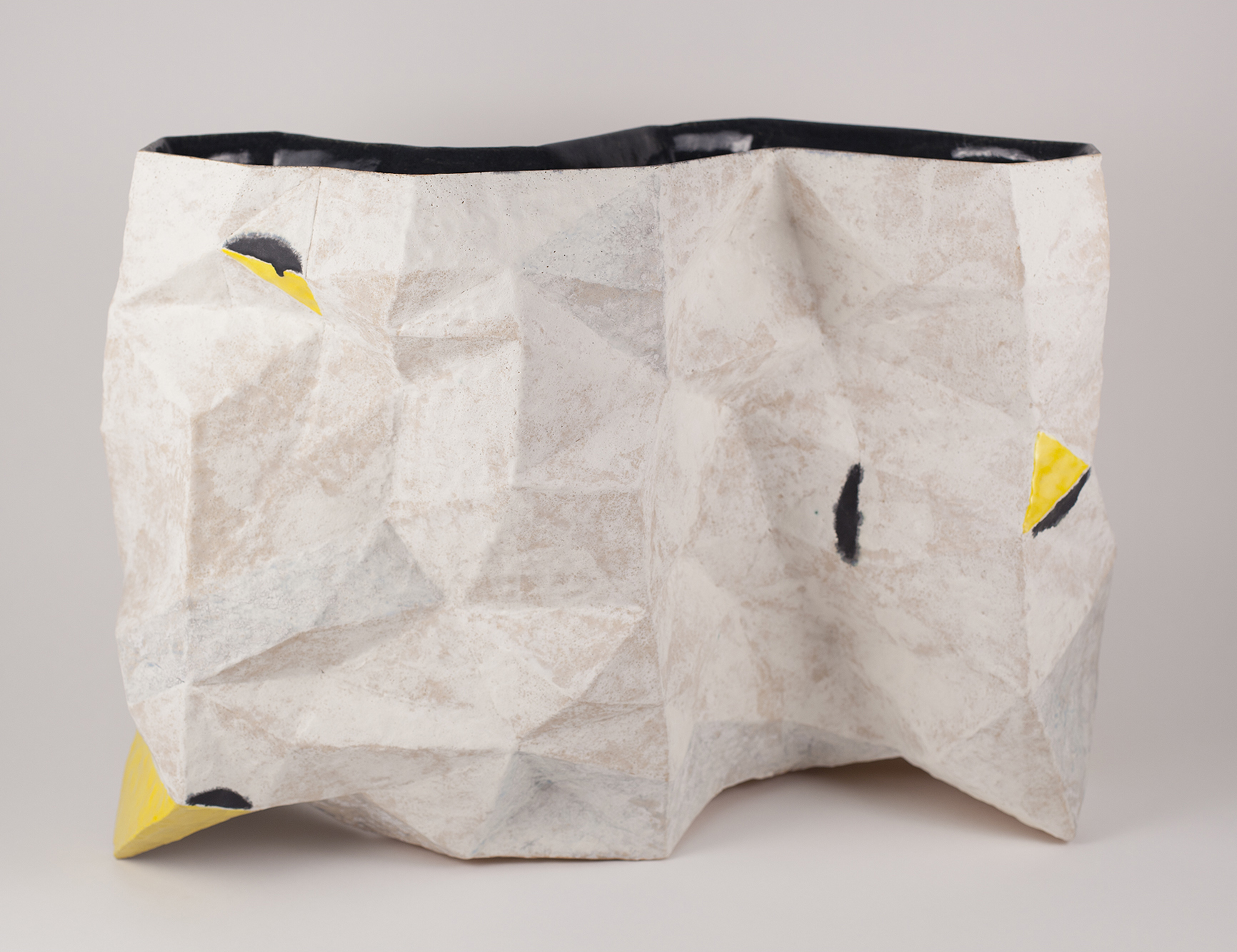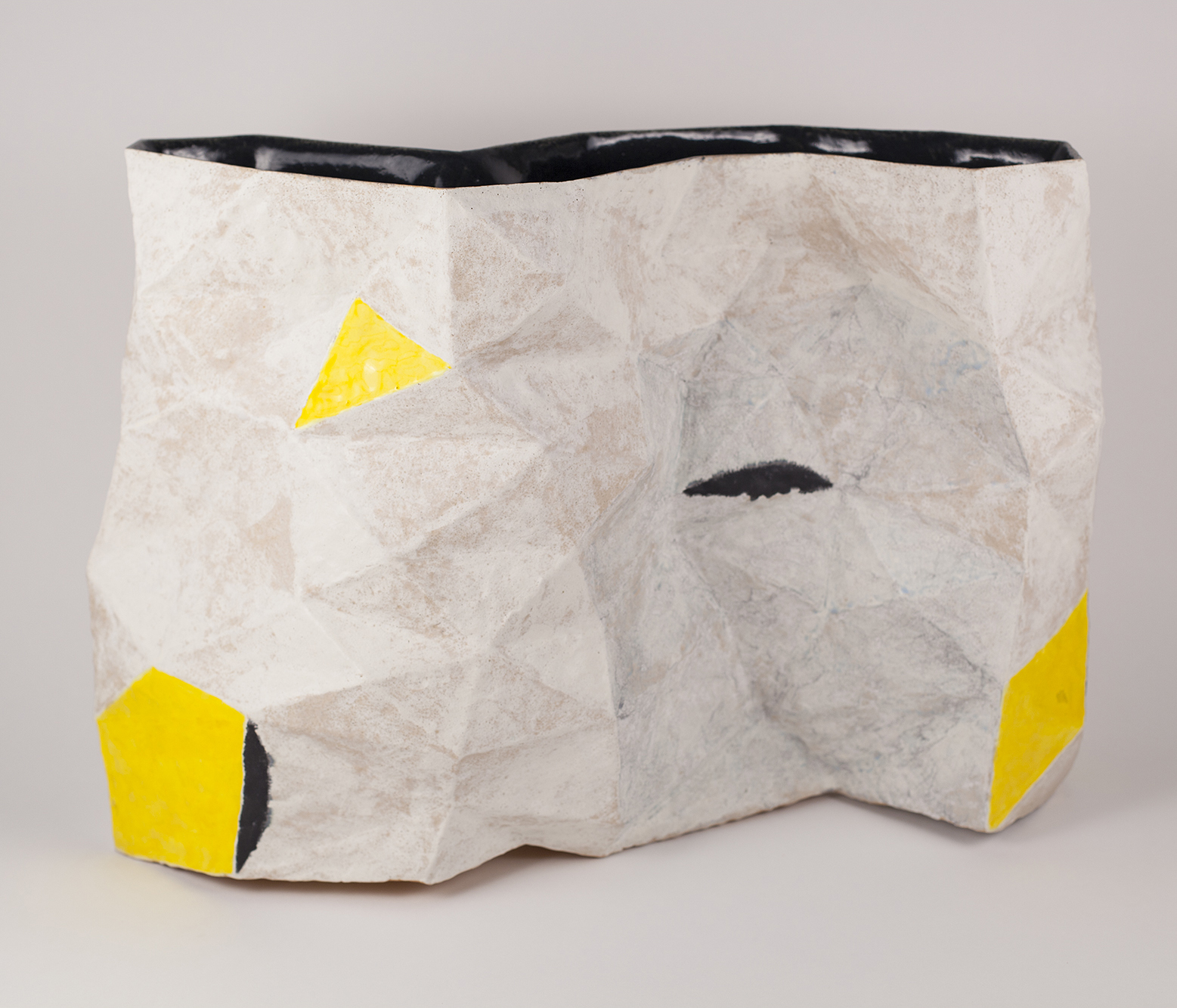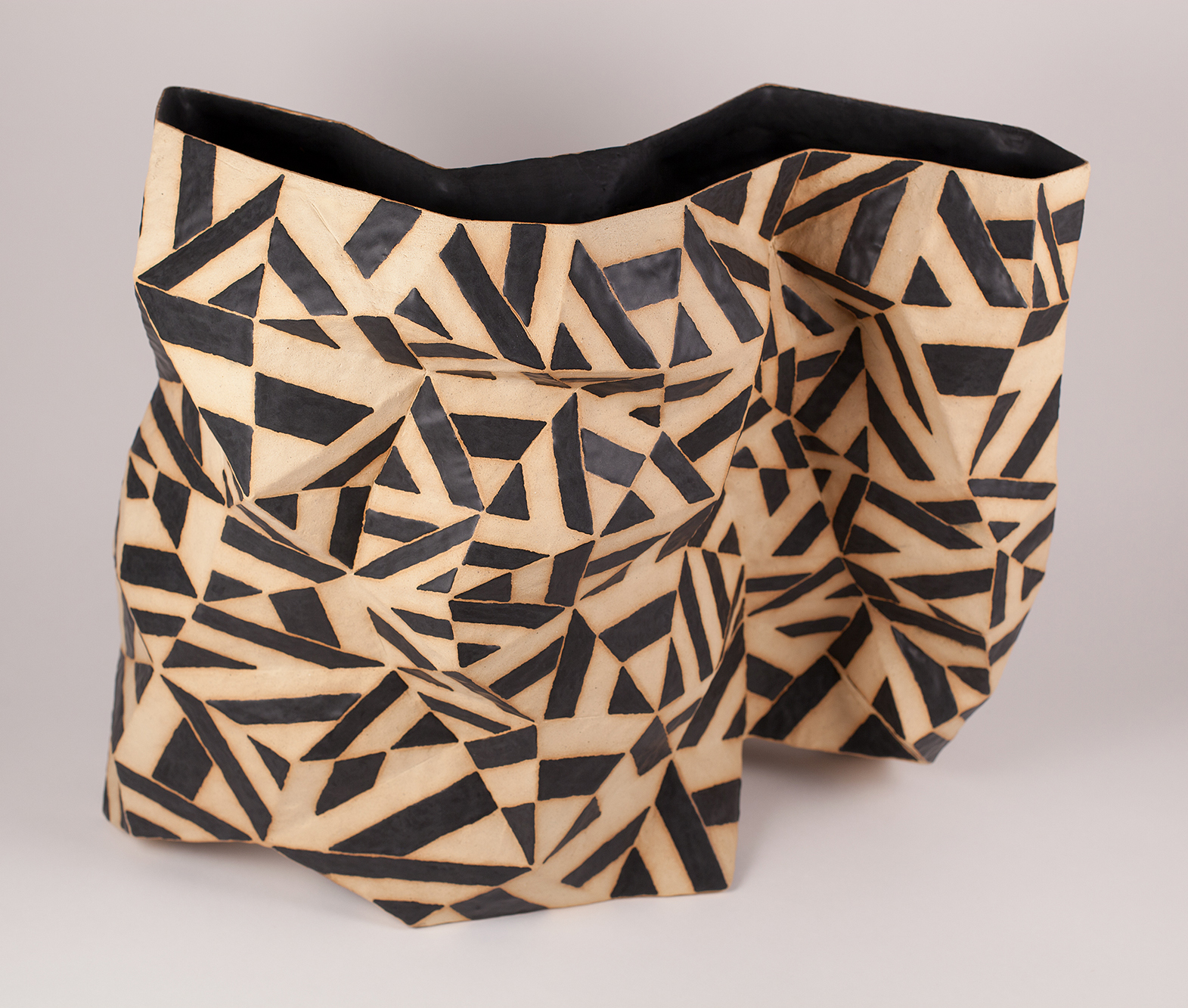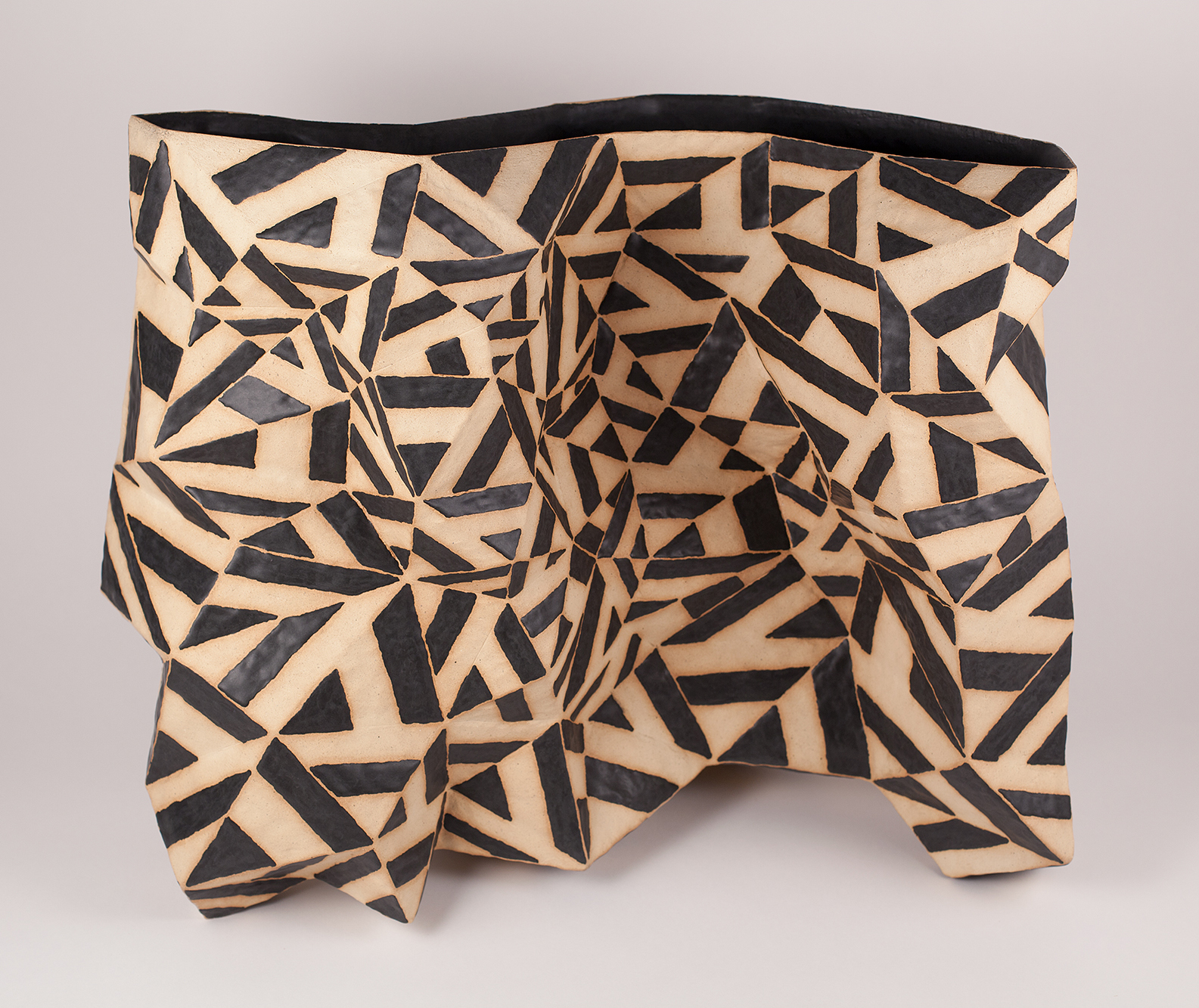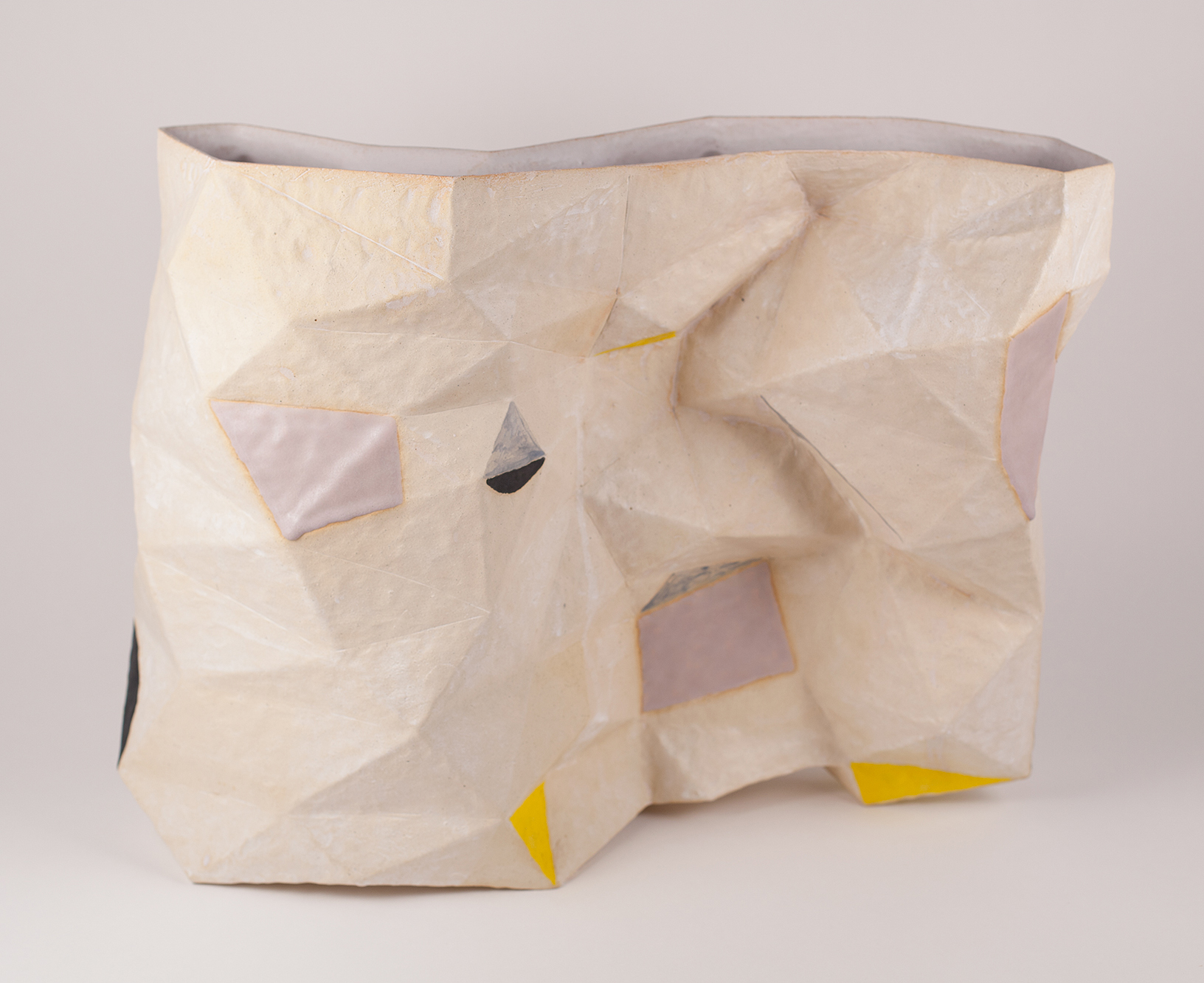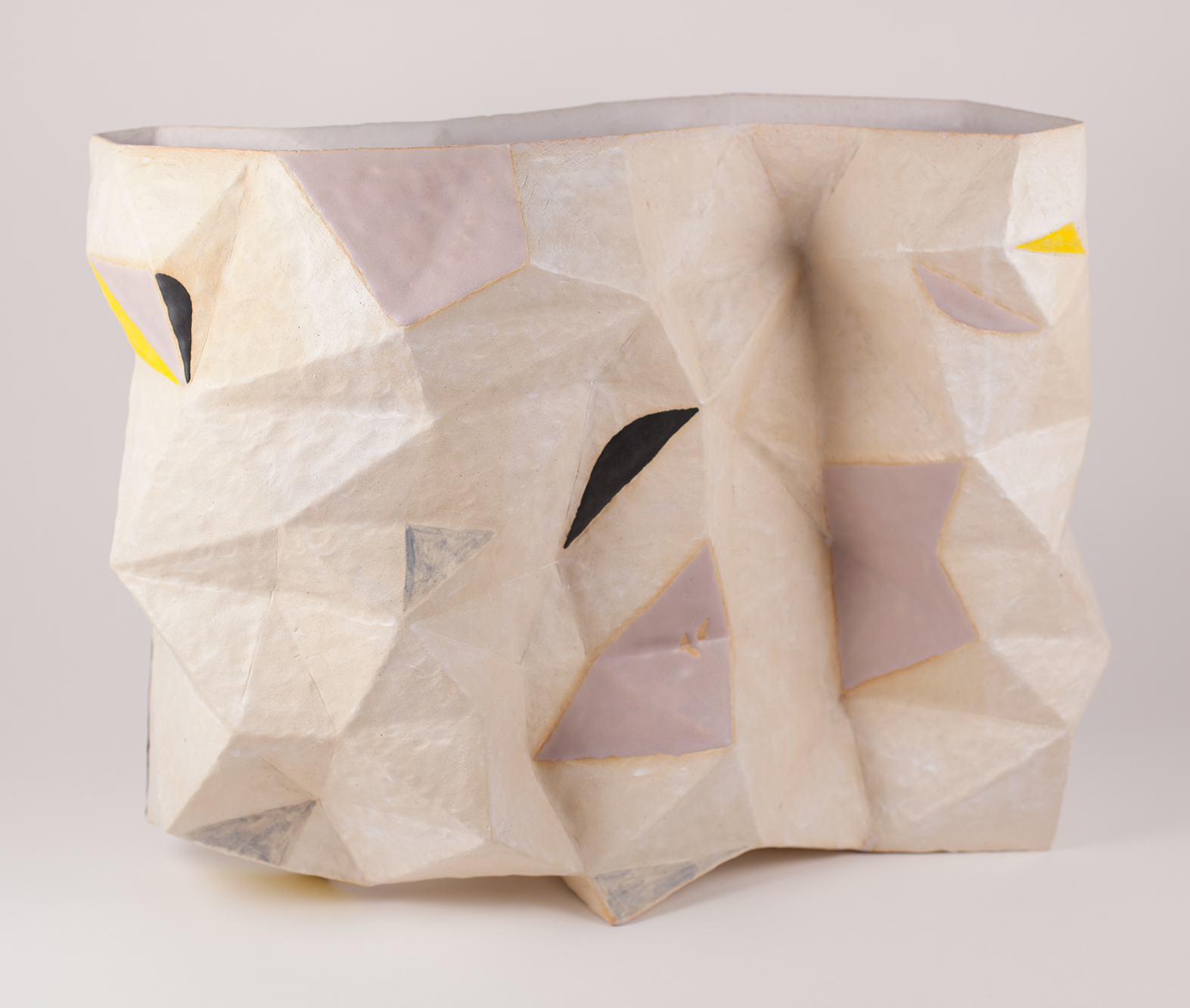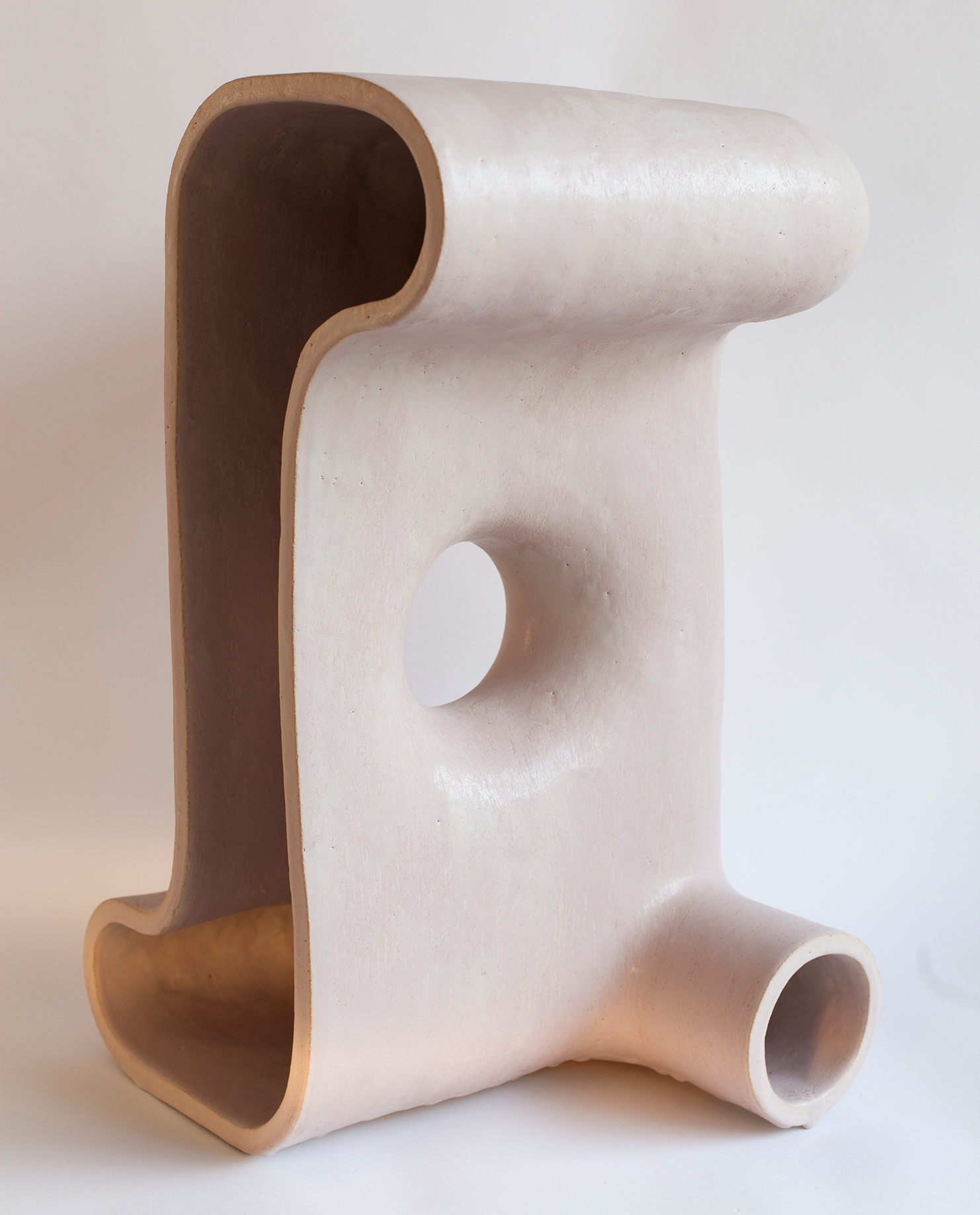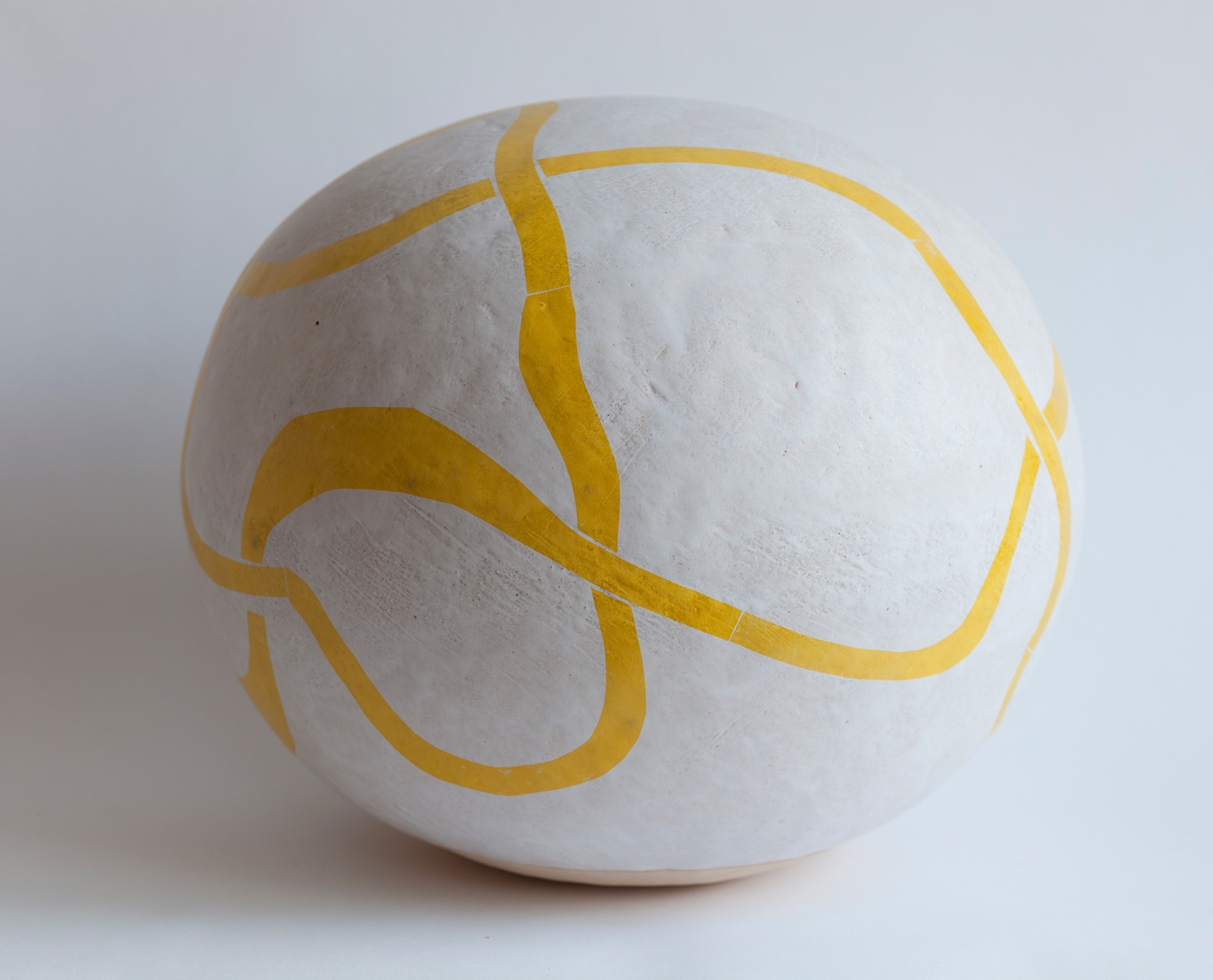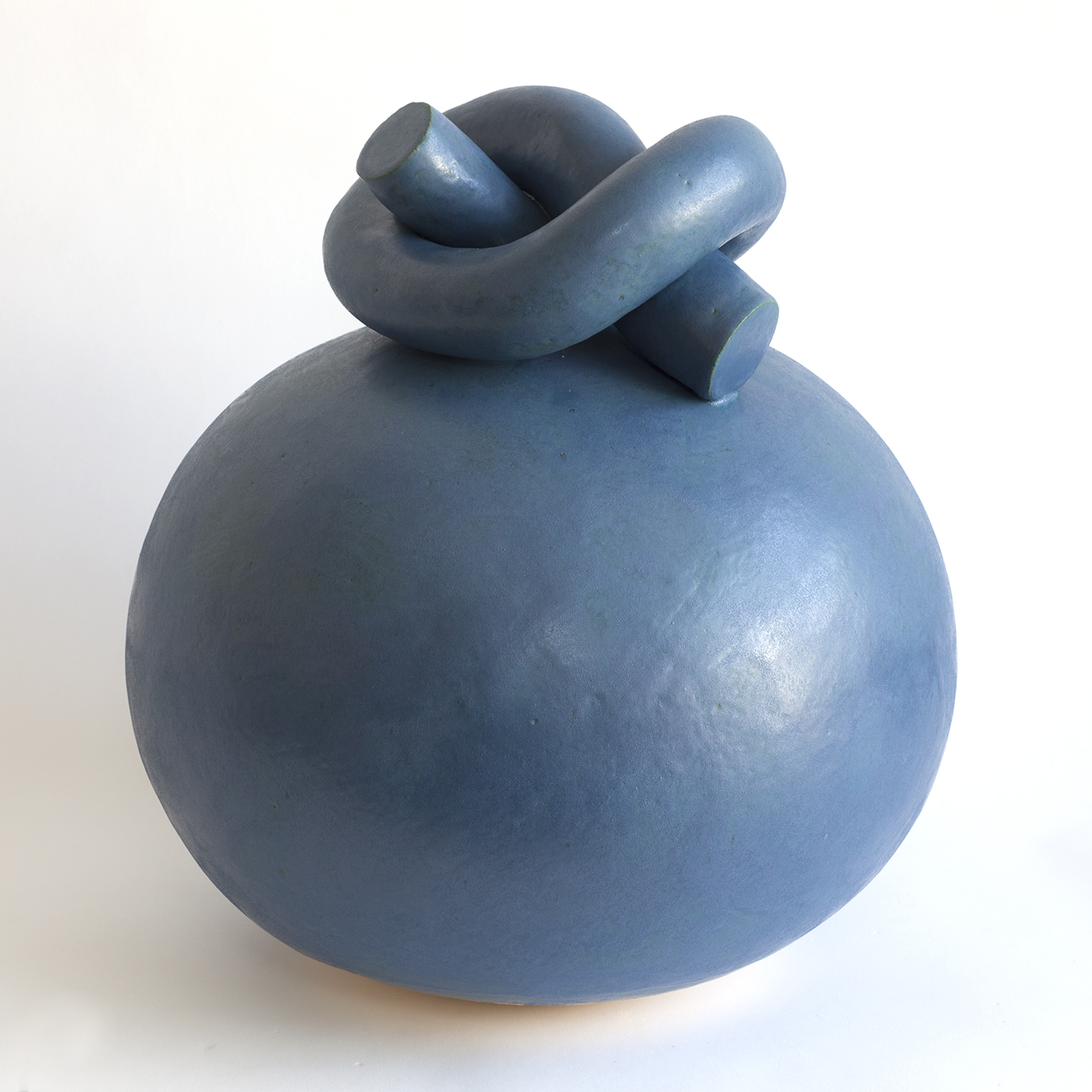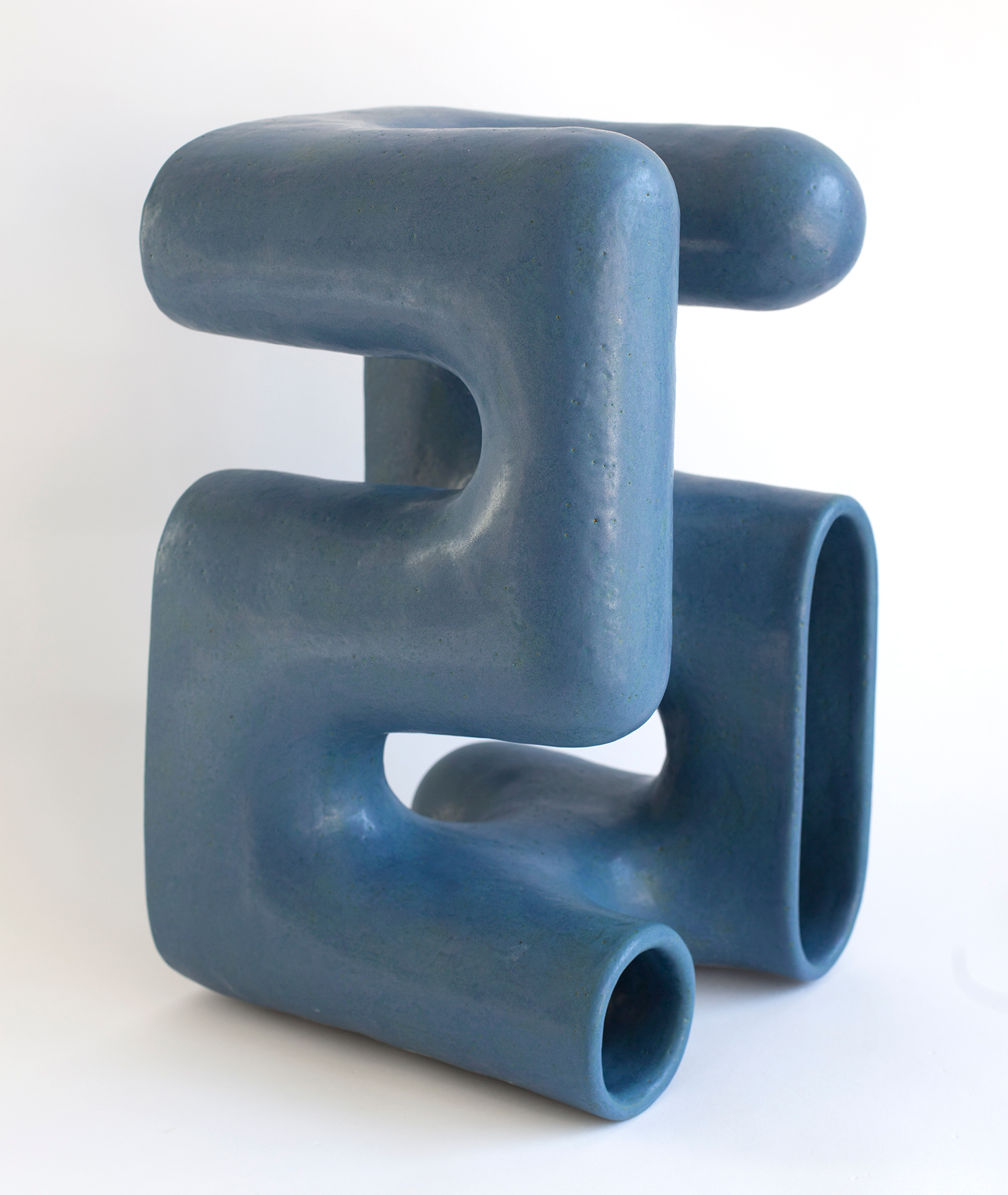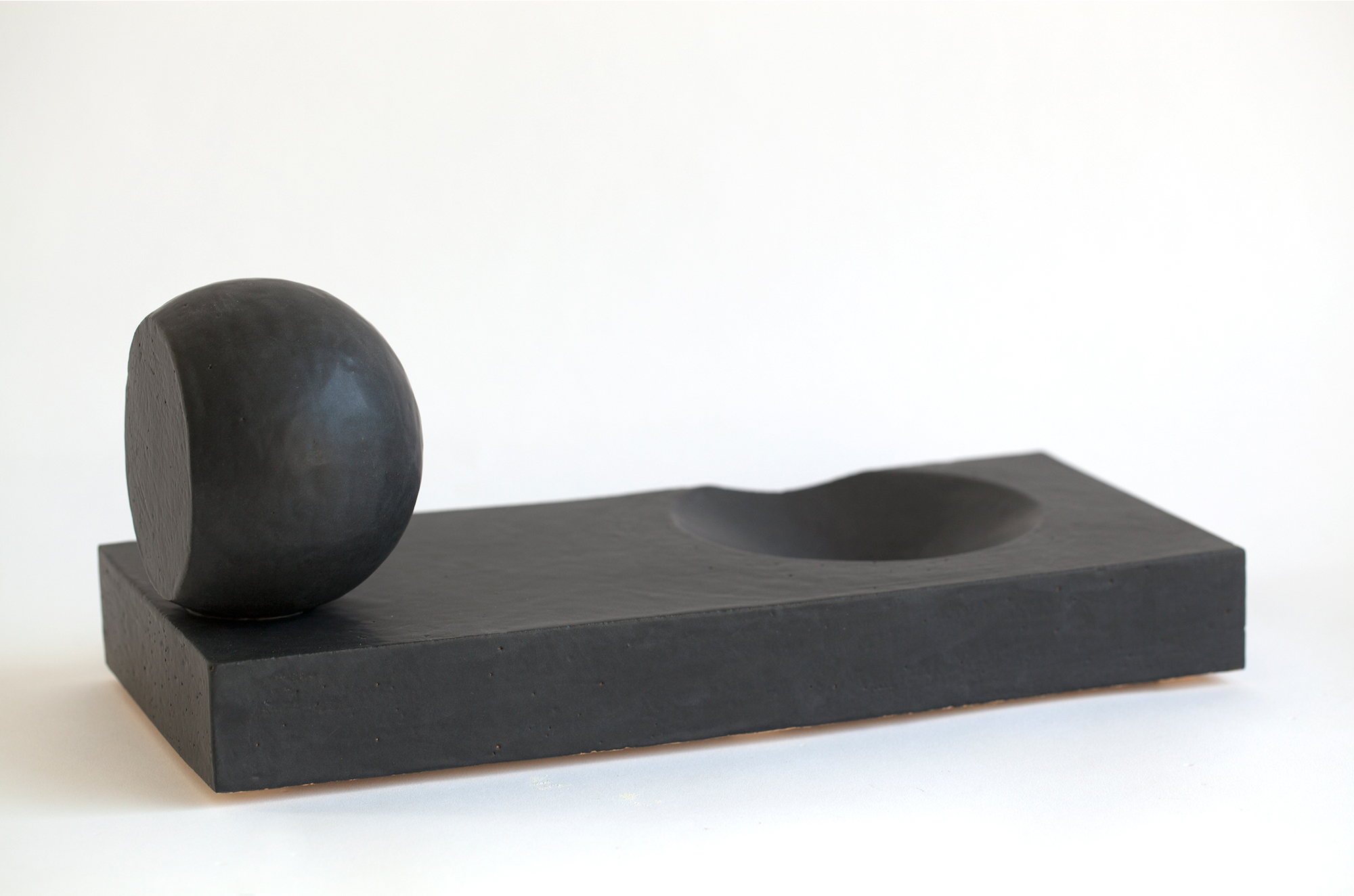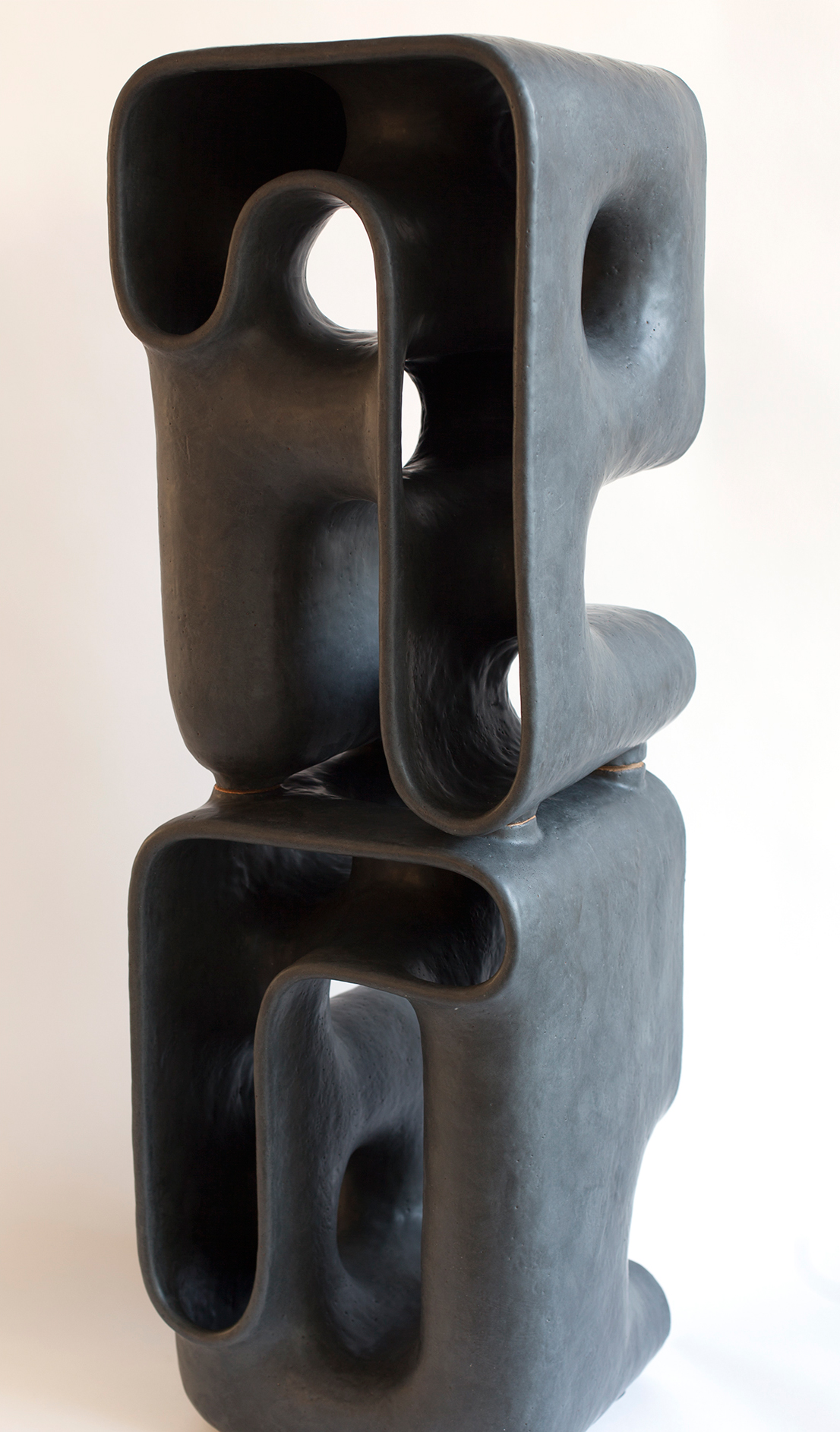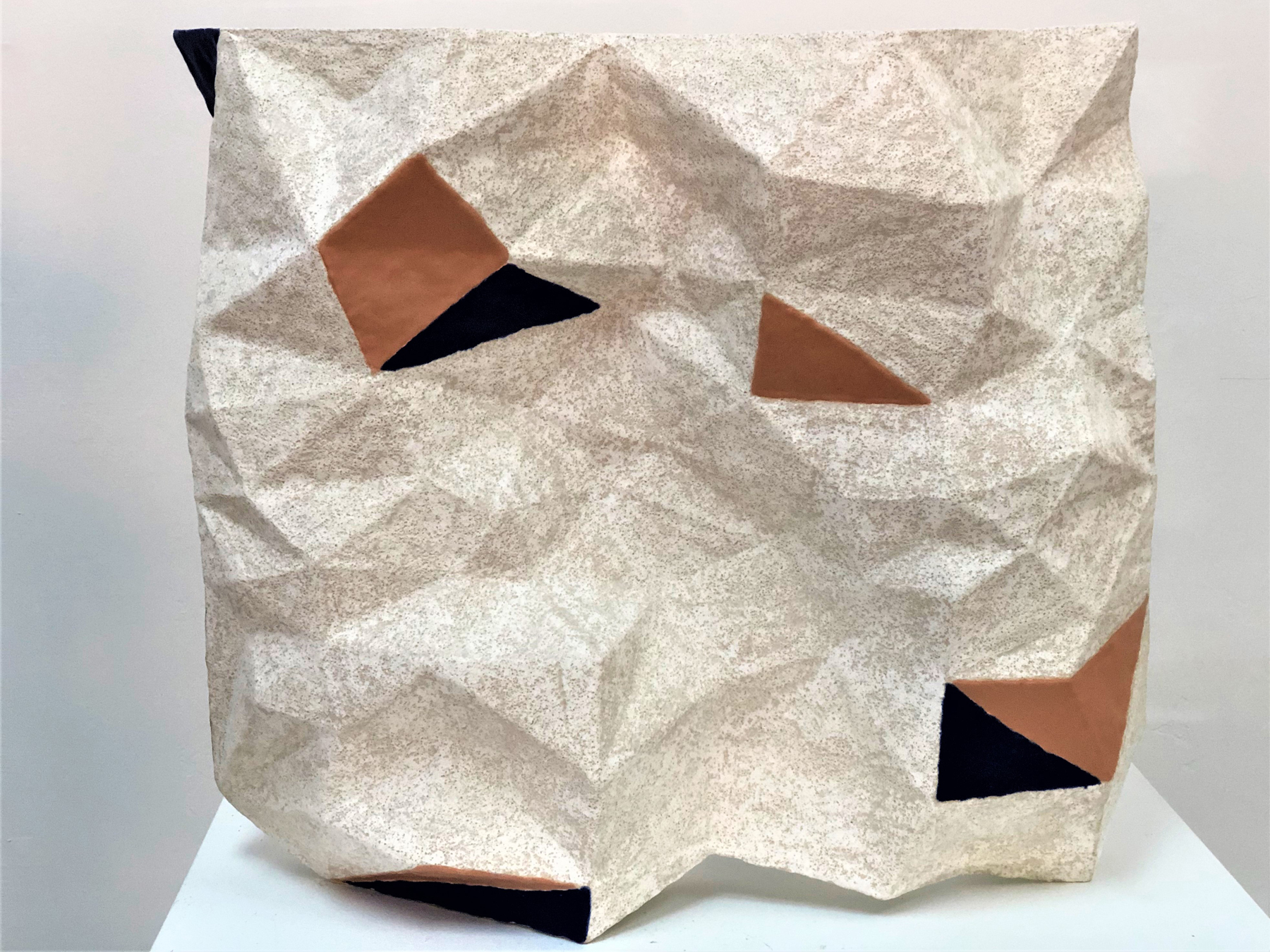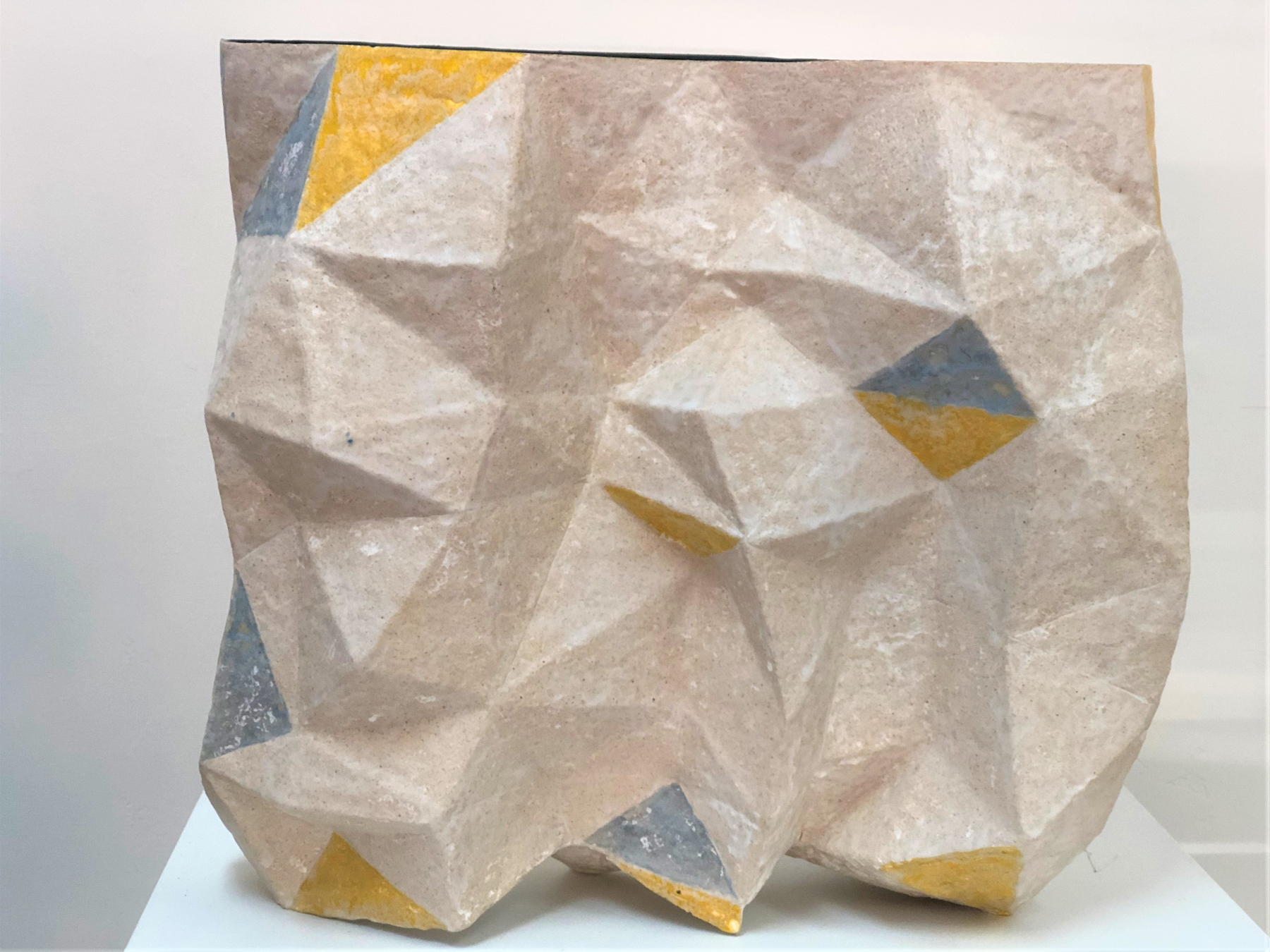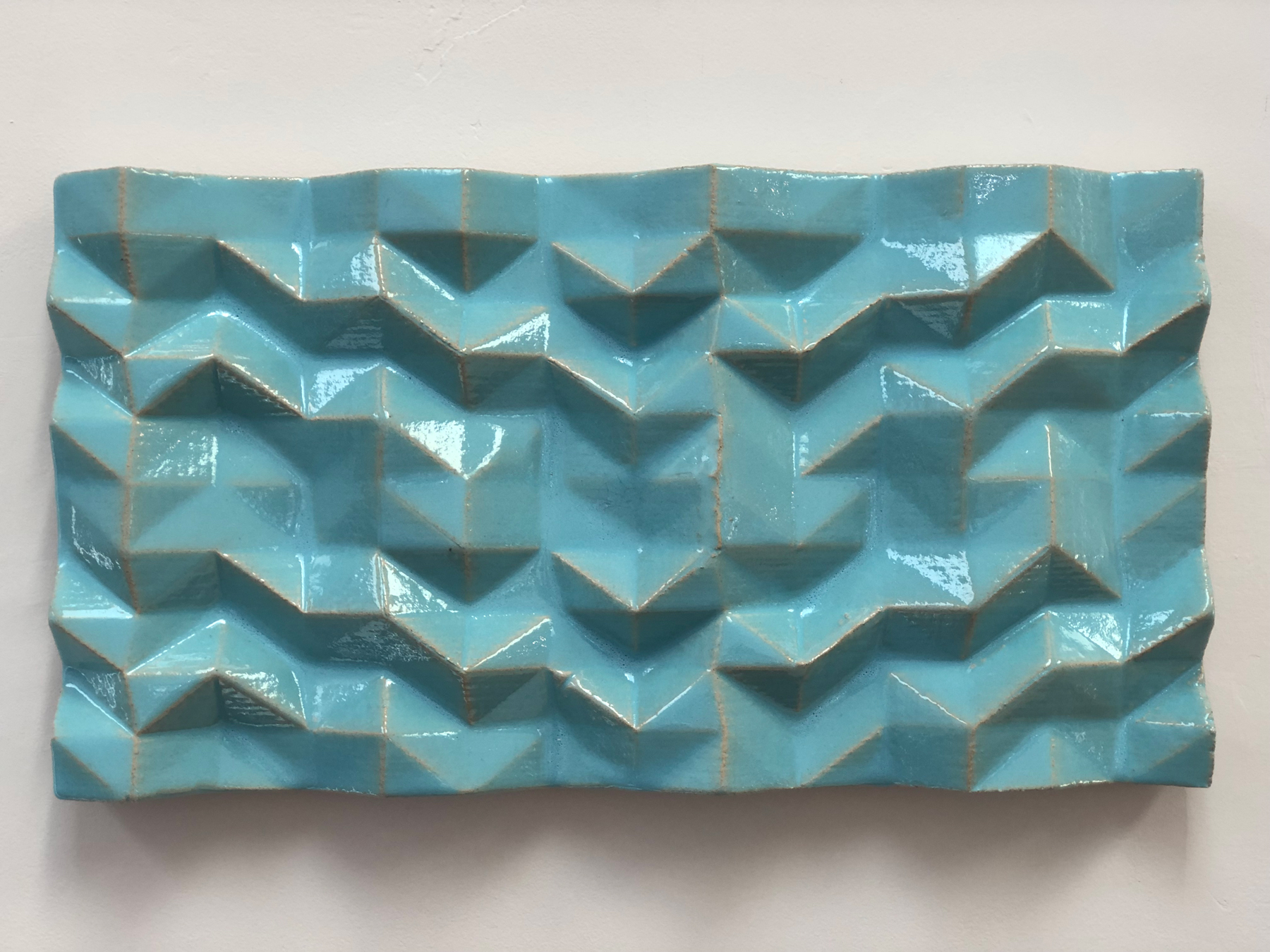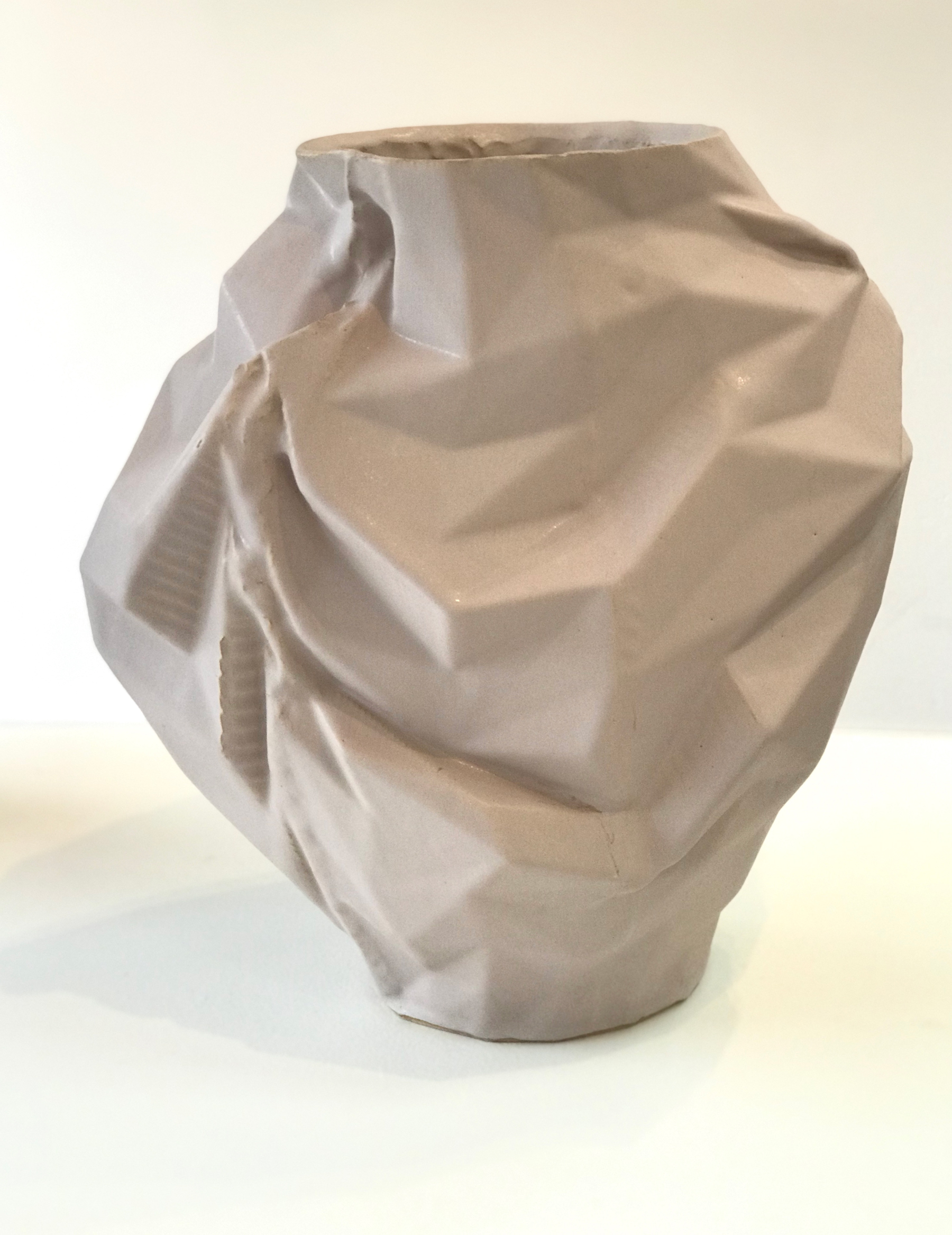Artist Statement
The potter Hamada Shoji said that a good bowl should be larger on the inside than the outside. My work is an ongoing exploration of the possibility that a tactile physical form might contain an expansive interior, a generous space, a site for the imagination and the thinking of thoughts, both intimate and immense.
I’m interested in objects with interiors and also the spaces between them. Still lives, diagrams, molecules, tilings, and aggregations each demonstrate the possibility of arrangements to be both complex and organized, formal and narrative, abstract and personal.
My vocabulary of materials has been selected over time for their individual properties and for the way they perform as parts of a larger system. Aluminum for its lightness and sheen, clay for it’s mutability of form and color, wood for its warmth and flexibility. Together they allow for a kind of material syntax.
I work through a combination of old media and new media; forming clay directly by hand or in tandem with digital modeling and computer controlled machines. This way of working demands a continuous movement between the abstract and the concrete, between information and manual skill. The potency of this combination seems to come from the resistance it creates. The made thing demands a bodily commitment, providing an insistent reminder that even thinking takes shape through the textures and friction of the mind.
